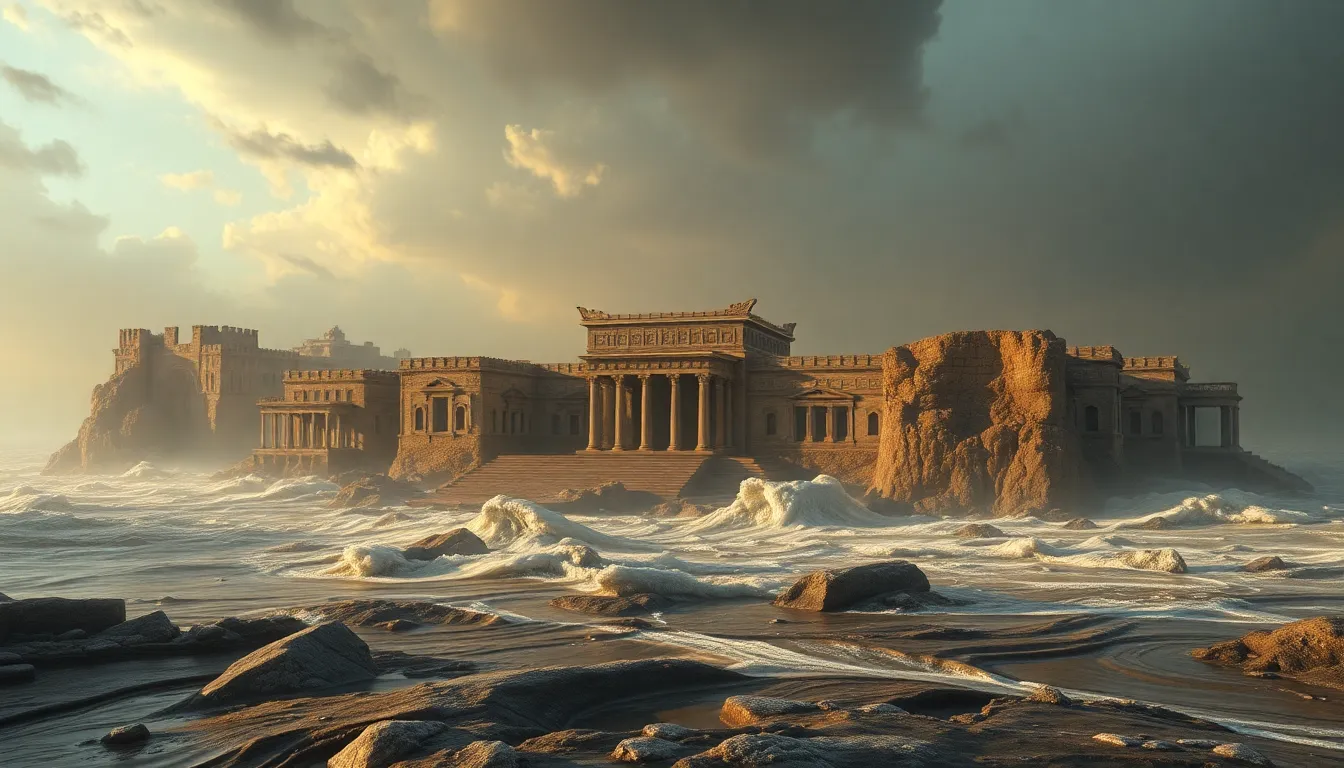The Mythical Floods That Defined Civilizations: A Historical Perspective
I. Introduction
Throughout human history, floods have played a significant role in shaping civilizations. From the fertile banks of rivers to the devastating destruction of coastal cities, the impact of floods has been profound. In many cultures, these natural disasters have transcended mere historical events to become mythical narratives that reflect humanity’s struggles, fears, and resilience.
This article delves into the concept of mythical floods, exploring how they are represented in various cultures around the world. By examining these narratives, we can uncover the historical and cultural significance of floods and their enduring legacy across civilizations.
II. The Concept of Mythical Floods
Mythical floods are not merely tales of water rising; they are rich narratives woven into the fabric of cultural identity. These stories often serve as cautionary tales or moral lessons, encapsulating the relationship between humanity and nature.
A. Definition of mythical floods in historical narratives
Mythical floods refer to stories in various cultures that recount a great deluge, often seen as a divine response to human behavior. These tales are more than just historical accounts; they express universal themes of renewal, destruction, and the fragility of human existence.
B. Common characteristics of flood myths across cultures
- A divine or supernatural cause for the flood.
- A chosen survivor or group of survivors, often tasked with repopulating the earth.
- A significant moral or ethical lesson.
- The use of water as a symbol of both destruction and purification.
C. The psychological and symbolic meanings of floods
Floods symbolize chaos and destruction but also offer the promise of renewal and rebirth. They reflect humanity’s fears of nature’s power and the consequences of moral failings, serving as a reminder of the delicate balance between civilization and the natural world.
III. The Mesopotamian Flood: The Epic of Gilgamesh
The Epic of Gilgamesh, one of the oldest known literary works, contains a profound flood narrative that has influenced various cultures throughout history.
A. Overview of the Epic of Gilgamesh and its flood narrative
In this epic, the character Utnapishtim is chosen by the gods to survive a catastrophic flood meant to cleanse the earth of humanity’s sins. He builds a massive boat, saves his family and animals, and eventually sends out birds to find land.
B. Historical context of Mesopotamian civilization
Mesopotamia, often referred to as the “Cradle of Civilization,” was characterized by its advanced societies, agriculture, and city-states. The region’s geography made it susceptible to flooding, which likely influenced the creation of flood myths.
C. Analysis of the flood’s symbolism and its impact on Mesopotamian culture
The flood in the Epic symbolizes divine retribution and the potential for renewal. It reflects the Mesopotamian belief in the gods’ control over nature and the importance of piety and moral conduct in society.
IV. The Biblical Flood: Noah’s Ark
The Great Flood described in the Book of Genesis is one of the most widely recognized flood narratives in Western culture.
A. Account of the Great Flood in the Book of Genesis
In this narrative, God decides to cleanse the earth of wickedness through a flood, sparing only Noah, his family, and pairs of animals. Noah builds an ark and, after the flood recedes, humanity is given a second chance.
B. Examination of its theological implications for Judaism and Christianity
This story serves as a foundational myth for both Judaism and Christianity, emphasizing themes of sin, redemption, and covenant. The rainbow, a symbol of God’s promise never to flood the earth again, represents hope and divine mercy.
C. Influence on Western literature and art throughout history
Noah’s Ark has inspired countless works of art, literature, and film, becoming a symbol of faith and survival in the face of adversity.
V. The Indus Valley Civilization: The Legend of Manu
In Hindu tradition, the story of Manu and the flood is an essential part of the cultural narrative surrounding creation and rebirth.
A. Description of the flood myth in Hindu tradition
Manu is warned by a fish (an incarnation of the god Vishnu) about an impending flood. He builds a boat, saves various species, and after the waters recede, he repopulates the earth.
B. Historical context of the Indus Valley Civilization
The Indus Valley Civilization was known for its advanced urban planning and trade. The flood myth likely emerged from the region’s experiences with monsoon floods and river dynamics.
C. Cultural significance of the story of Manu and its lasting legacy
The story of Manu emphasizes the importance of dharma (duty) and the cyclical nature of life and death, reinforcing moral values within Hindu culture.
VI. The Greek Flood: Deucalion and Pyrrha
In Greek mythology, the flood narrative of Deucalion and Pyrrha highlights themes of rebirth and the resilience of humanity.
A. Overview of the flood myth in Greek mythology
Zeus, angered by humanity’s wickedness, decides to flood the earth. Deucalion and his wife Pyrrha survive by building a chest and are tasked with repopulating the world.
B. Analysis of the cultural implications for ancient Greek society
This myth reflects ancient Greek values regarding morality, the power of the gods, and the importance of piety. The flood serves as a reminder of the consequences of hubris.
C. Comparison to other flood myths and their universal themes
Similar to other flood narratives, the Greek myth emphasizes destruction, survival, and the moral lessons that arise from such catastrophic events.
VII. The Americas: The Flood Myths of Indigenous Cultures
Indigenous cultures across the Americas have rich traditions of flood myths that convey essential moral and cultural teachings.
A. Exploration of flood narratives among Native American tribes
Many Native American tribes have their own unique flood stories, often featuring a great flood sent by a higher power to cleanse the earth.
B. Case studies: the Ojibwe and the Maya flood myths
- Ojibwe Myth: The Ojibwe flood narrative features a great flood that destroys the earth, with a few survivors chosen to start anew.
- Maya Myth: The Maya flood myth describes a flood that wipes out the early humans, leading to the creation of a new race.
C. The role of these myths in shaping cultural identities and moral values
These flood myths serve to instill values of respect for nature and community, emphasizing the interconnectedness of all life.
VIII. The Scientific Perspective: Geological Evidence of Ancient Floods
While many flood myths are rooted in cultural narratives, scientific evidence suggests that real historical floods may have inspired these stories.
A. Analysis of archaeological and geological evidence supporting flood myths
Archaeological findings, such as sediment layers and ancient flood deposits, provide evidence of catastrophic flooding events that could have influenced myth-making.
B. Discussion on how real historical floods may have inspired mythological narratives
Ancient civilizations often experienced significant flooding, leading to the development of myths that sought to explain and contextualize these events.
C. The impact of climate change and natural disasters on civilizations
Understanding ancient flood narratives in the context of climate change helps us recognize the ongoing relationship between humans and their environment, highlighting the lessons learned from past disasters.
IX. The Modern Influence of Flood Myths
The relevance of ancient flood myths persists in contemporary literature, art, and discussions about environmental issues.
A. The relevance of ancient flood myths in contemporary literature and media
Modern storytelling often revisits flood myths, using them as metaphors for personal and societal struggles. Movies, books, and art continue to draw inspiration from these ancient narratives.
B. How these myths inform modern discussions on climate change and environmentalism
Flood myths serve as cautionary tales, warning of the consequences of environmental neglect and the importance of sustainable practices.
C. The enduring legacy of



